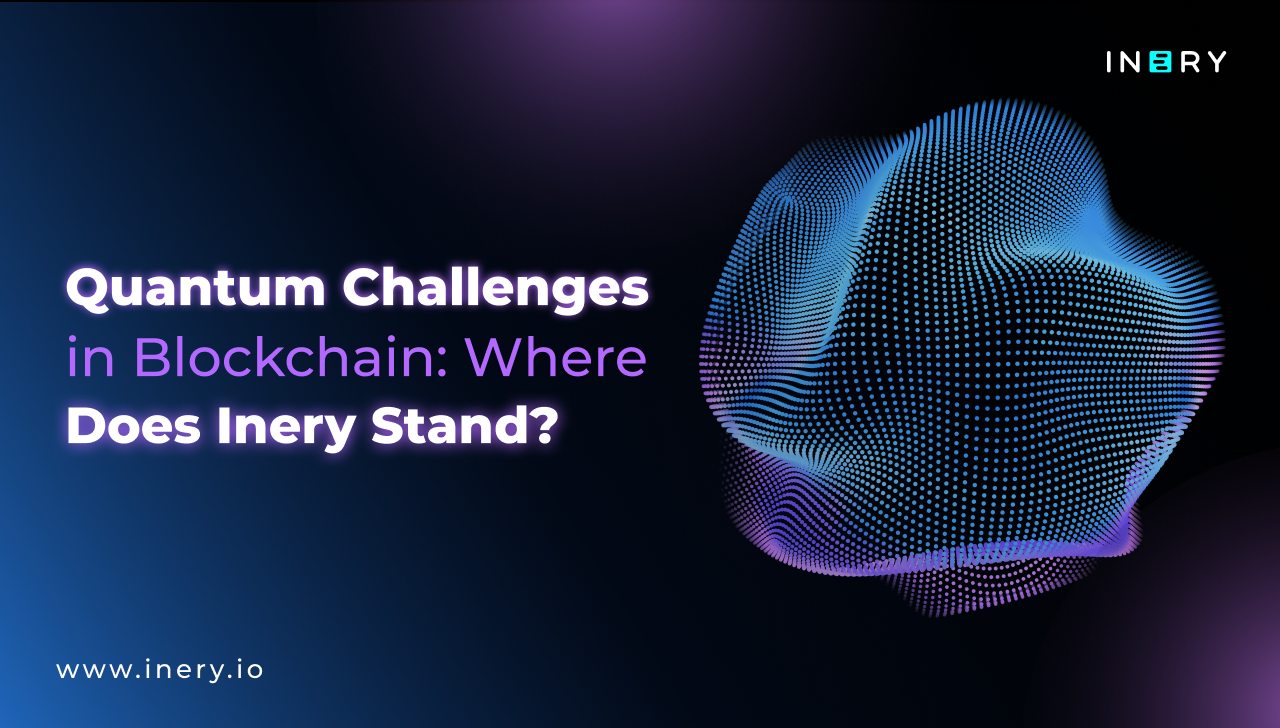Blockchain technology, now a cornerstone in digital transactions and data integrity, faces an unprecedented challenge with the advent of quantum computing. Especially at risk are traditional proof-of-work (PoW) cryptocurrencies, like Bitcoin. Renowned for its role in PoW blockchain, Bitcoin's dependence on cryptographic methods for validating transactions and ensuring network security might not withstand the advanced capabilities of quantum computing.
Quantum computing is a radical departure from conventional computing paradigms. Unlike classical computing, which operates using binary bits, quantum computing utilizes qubits. These qubits have the unique ability to exist in multiple states simultaneously, enabling quantum computers to solve complex computations much more quickly than current computing technology.
This enhanced computational power could potentially unravel the cryptographic security that blockchain technologies, such as Bitcoin, currently rely on.
As we explore "Understanding Quantum Computing," we will shed light on the workings of this technology and its implications for blockchain technologies. Our discussion will focus on how quantum computing's unique attributes could disrupt the current cryptographic foundations of blockchain and highlight the urgent need for the development of new, quantum-resistant cryptographic methods.
This is essential for ensuring that blockchain technologies remain secure and functional in an era marked by rapid technological advancements.
Understanding Quantum Computing
Quantum computing represents a significant leap forward from traditional computing methodologies, characterized by its use of qubits. Unlike the binary bits in classical computing, which exist in a state of 0 or 1, qubits can be in multiple states simultaneously.
This unique feature allows quantum computers to handle and process complex calculations at speeds unattainable by current standards.
The rapid processing abilities of quantum computing present a formidable challenge, particularly to the cryptographic frameworks that underpin modern blockchain technologies.
PoW Cryptocurrencies and Quantum Vulnerability
The essence of blockchain technology, particularly in the realm of cryptocurrencies like Bitcoin that utilize a proof-of-work (PoW) system, is its reliance on cryptographic security. In PoW systems, network security is maintained through nodes that solve intricate mathematical puzzles, a process that demands significant computational resources.
The introduction of quantum computing into this equation changes the landscape dramatically. With its ability to efficiently resolve problems such as discrete logarithms and integer factorizations, quantum computing has the potential to disrupt the cryptographic base that Bitcoin and similar cryptocurrencies rely on.
This disruption could significantly lower the threshold for computational power needed to compromise these networks, raising concerns about vulnerabilities to attacks, including the notorious 51% attack, which could be executed with far less computational effort than what is possible with today's technology.
Understanding these risks and implications is crucial as we step into an era where quantum computing could become more prevalent. The cryptographic foundations that have been deemed secure for years under current technological capabilities may no longer offer the same level of security in a quantum computing landscape.
This necessitates a proactive approach to developing new cryptographic methods that can withstand the power of quantum computing, ensuring the continued security and viability of blockchain technologies in the face of these advanced computational developments.
Inery's Approach in the Quantum Context
While Inery is a leader in blockchain technology, it's essential to clarify that we are currently in the process of developing solutions to counter quantum threats, rather than having a ready-made answer. We understand the significance of quantum-resistant cryptographic algorithms to safeguard data and are actively pursuing research and development in this area.
Our goal is to ensure that Inery's infrastructure is prepared for the challenges of quantum computing, even though we are not yet at the solution stage.
Addressing Quantum Threats
The blockchain community, including Inery, is proactively seeking ways to mitigate the risks quantum computing poses. Innovative approaches like lattice-based cryptography and code-based cryptography are in development to provide quantum resistance. These methods aim to secure blockchain technologies against the advanced processing power of quantum computers, maintaining the reliability and security of PoW cryptocurrencies.
The Importance of Post-Quantum Cryptography
The advancement towards post-quantum cryptography is essential for maintaining the security of blockchain technologies. In 2022, the National Institute of Standards and Technology (NIST) took a significant step in this direction by selecting quantum-resistant encryption tools. Inery is committed to incorporating these advanced cryptographic methods to strengthen our systems against the vulnerabilities introduced by quantum computing.
With the continuous evolution of quantum computing, it presents considerable challenges to the cryptographic foundations of Proof of Work (PoW) cryptocurrencies. Inery is actively engaged in creating a quantum-resistant blockchain ecosystem. We are focused on spurring innovation and enhancing security in the blockchain sector, preparing PoW cryptocurrencies to effectively confront the challenges of quantum computing.
In light of these advancements, it's crucial for the blockchain community, including Inery, to adopt new cryptographic strategies. Our dedication to exploring and implementing quantum-resistant solutions demonstrates our commitment to maintaining the security of blockchain technology in the face of evolving quantum computing capabilities.
Conclusion
The convergence of quantum computing and blockchain technology presents both challenges and opportunities. Standing at the threshold of the quantum era, collaborative efforts and innovation are essential. Inery is part of this journey, not yet as the definitive solution, but as an active participant working towards securing the legacy and potential of PoW cryptocurrencies in a quantum-aware future.
Our commitment to developing a quantum-resistant blockchain ecosystem is a crucial step in preparing for a future where blockchain technology can confidently withstand the most sophisticated computational threats.
Join us in this endeavor as we collectively work to protect the integrity and security of blockchain technology against the quantum horizon.

Inery•
6 months ago
The Data Breaches Of 2023: The Report Wrap-Up
Navigate the changing cybersecurity landscape highlighted in IBM's 2023 Data Breach Report, addressing the alarming rise in cyber threats from a shift to secondary vendors. ...READ MORE
-1703751931.png)
Share

Inery•
11 months ago
SQL Vs NoSQL: When to Use One Over the Other
SQL and NoSQL have different recommended use cases. Click here to learn which one is more useful to you. ...READ MORE
-1691048052.png)
Share

Inery•
2 years ago
Inery Community Updates Edition #2
This edition of community updates will focus on what has happened since then and some more exciting news. ...READ MORE

Share

Inery•
2 years ago
Inery Community Updates Edition #1
Community Corner ...READ MORE

Share
Most popular today



